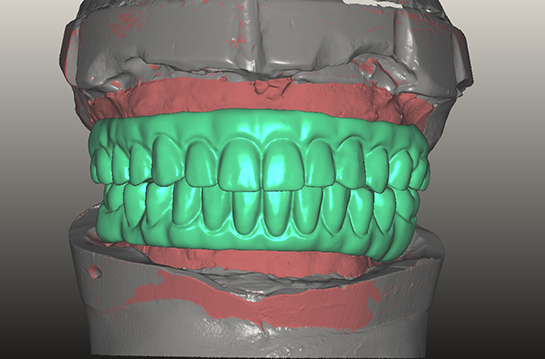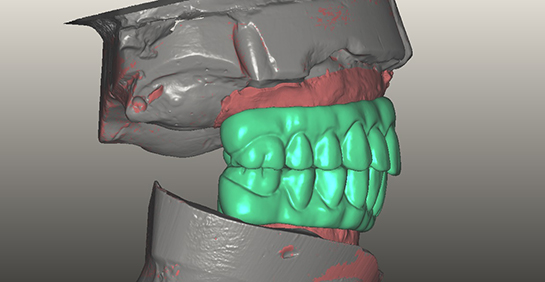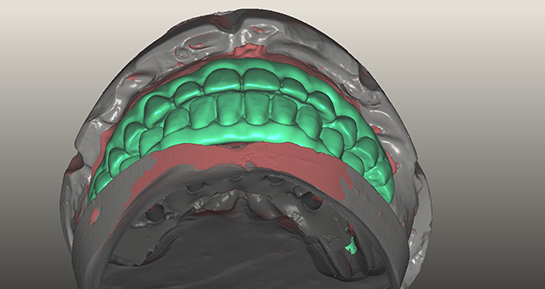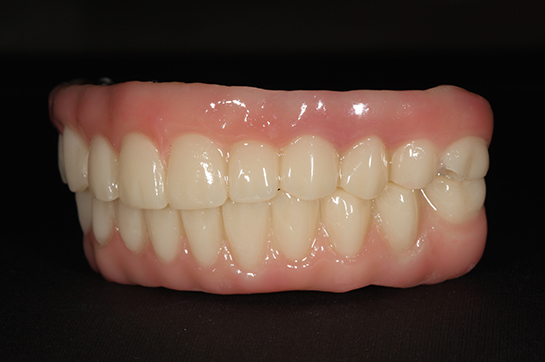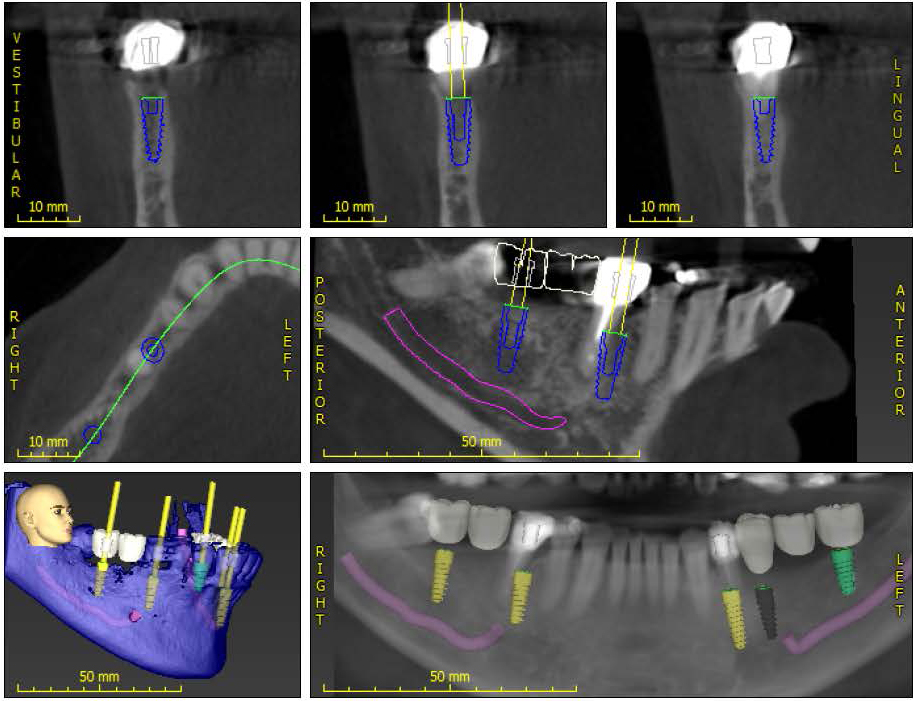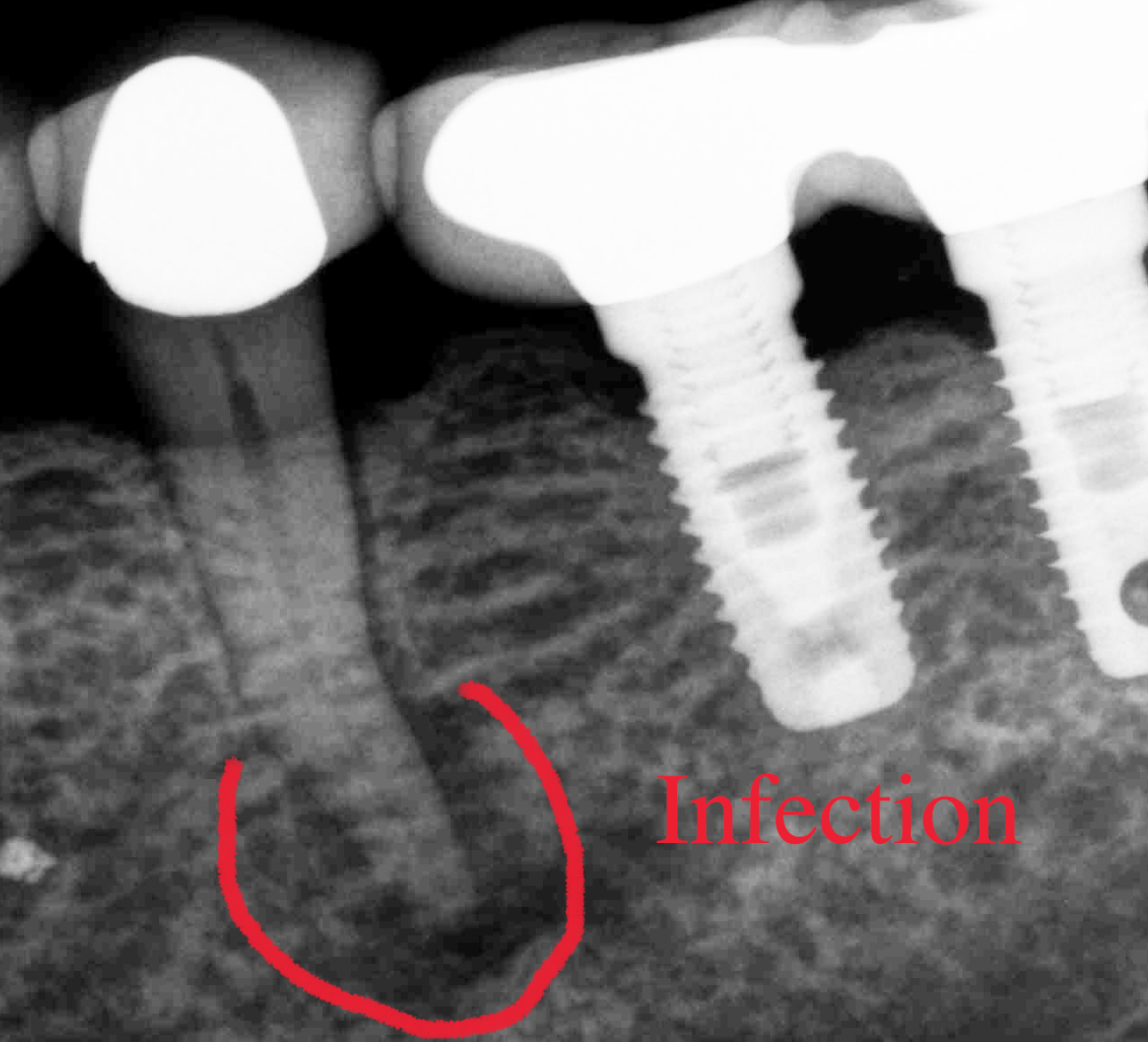Often time patients would present with a tooth that may feel unusual, uncomfortable, or slightly painful. However, traditional X-rays do not always show the exact problem due to the fact that bone morphology and root structures may overlap each other and create inaccurate images. Stitched together from precise individual slices of images, 3 Dimensional X-rays (Cone Beam Scans) provide very detailed images which can help clinicians see exactly what is going on with the questioned site.
The first X-ray below shows a tooth that may have something going on at the tip of the root, yet the information is limiting and non-diagnostic. The second X-ray below is an actual slice of a 3D Scan which shows definite lack of bone support on the front side of the tooth. The image also shows slow growing infection lesions that have been dissolving the bone around the roots of the tooth. The red arrows point to the problem area.
Based on the information from the 3D X-ray, this tooth cannot be saved because hanging on to it will allow further destruction of the jaw bone surrounding the tooth. Early detection of bone loss and infection can help make the treatments much more predictable, and 3D X-rays are now a very important part of our dental diagnostic tools.
Traditional X-ray showing possible problem at the end of the root.
A slice of a 3D X-ray showing definite bone loss and infection around the same tooth above.



